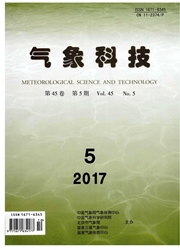

 中文摘要:
中文摘要:
平流层气溶胶在全球大气的辐射与化学平衡中起着重要作用,对全球气候变化有着重要的影响。数值模拟研究是研究平流层气溶胶浓度、粒径分布及其化学组成的重要手段之一。回顾了平流层气溶胶模式的发展历程,并对现今研究中较有代表性的5种模式进行了比较,着重考察了模拟结果在OCS、SO2分布情况等方面与实测数据的相符程度。结果发现5种模式均可再现平流层气溶胶和它的主要前体气体分布的大部分特征,但同时也都存在各自的局限。最后展望了平流层气溶胶模式未来的发展方向以及需要改进的问题。
 英文摘要:
英文摘要:
Stratospheric sulfate aerosols play an important role in the radiation the global atmosphere, and have significant impact on global climate changes and chemical equilibrium of The numerical simulation of stratospheric aerosols is one of major methods in studying the concentration, particle size distribution, and chemical composition of stratospheric sulfate aerosols. A brief review of the development and application of stratospheric aerosol models are given, and comparison between five stratospheric aerosol models that have been widely used in recent years is conducted. Special attention is paid on the differences between simulation results and satellite observations on the distribution of OCS (Carbonyl Sulfide) and SO2, and it is found that all five models can represent most of the characters of stratospheric aerosols and their precursors, but each has its own limitations. The prospects for future stratospheric aerosol model development and issues need to be improved are also discussed.
 同期刊论文项目
同期刊论文项目
 同项目期刊论文
同项目期刊论文
 期刊信息
期刊信息
